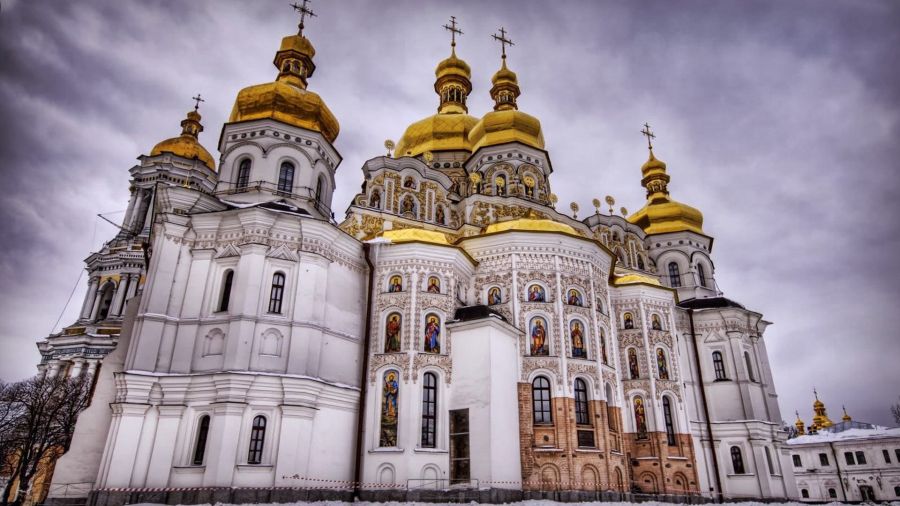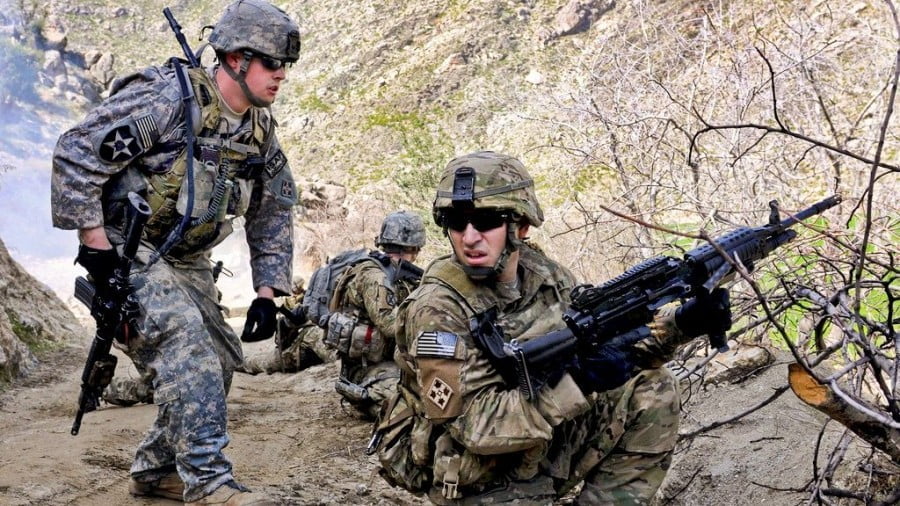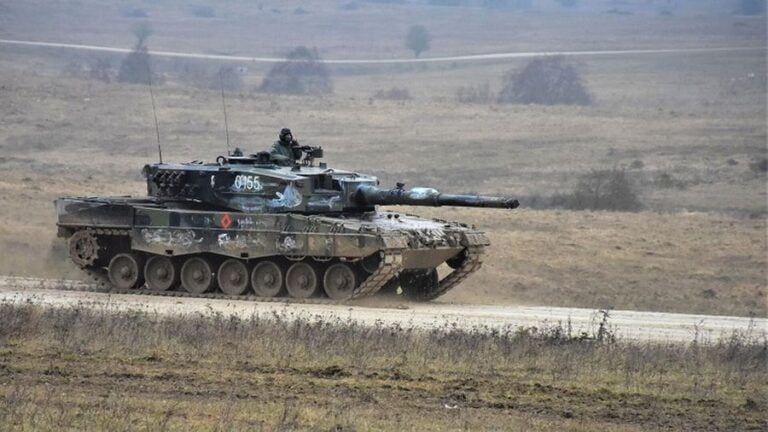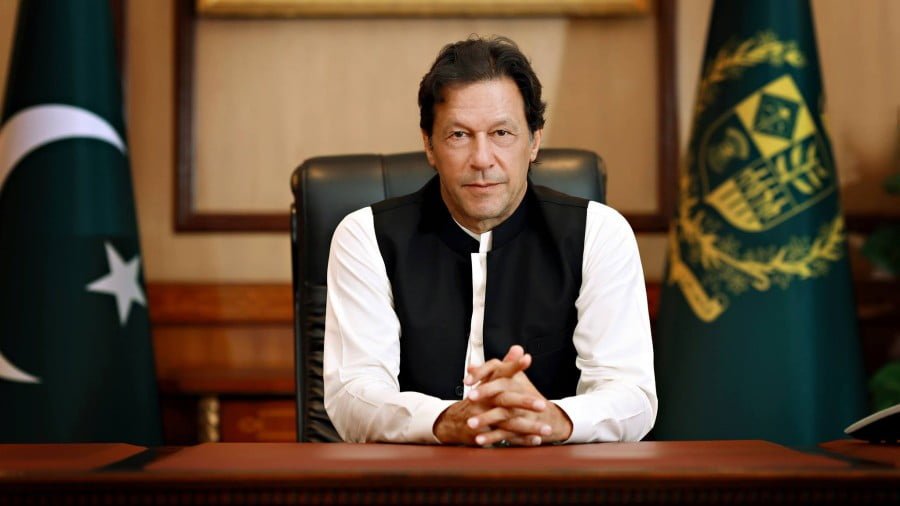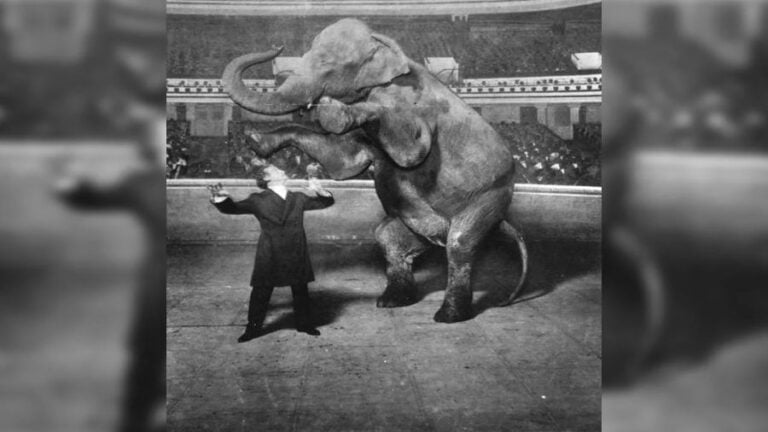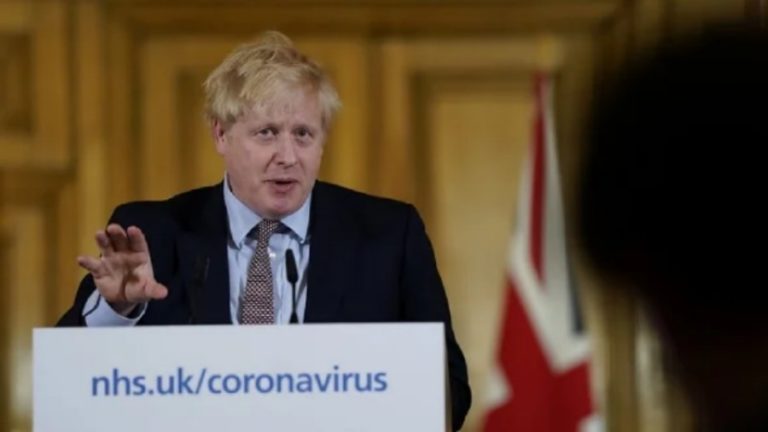Arresting Priests & Concocted Rift in Orthodox Church –Greatest Victim of the Ukraine Conflict!
Arresting priests, especially based on the orders of someone claiming to be Jewish, is not a wise decision. Ukrainian leaders, including Zelensky, have accused the long-established Ukrainian Orthodox Church of undermining “Ukrainian unity,” although it’s unclear what exactly that means.
Religion is being weaponized in Ukraine, a phenomenon that has occurred throughout history in both the Church and Europe. However, this proxy war inspired by the West is complicating matters that should have been allowed to progress naturally—and be resolved by the Orthodox Church itself.
It would be “preferable” to let the Church resolve its own issues, without using its priests and followers as pawns or threatening their lives. One of the anticipated outcomes of the Russia-Ukraine military conflict is a restructuring of power dynamics within the Orthodox Church, which is almost certainly being influenced by Rome and the collective West.
The recent news is deeply troubling. According to the Reuters news agency, a senior Orthodox cleric in Kyiv has been detained on charges of inflaming religious hatred and justifying Russia. This cleric, Metropolitan Pavlo, has been under house arrest since April.
Now, in order to secure his release, he is being asked to post a significant amount of bail. However, he is unable to do so due to his religious beliefs and lack of financial resources. Pavlo expressed his inability to come up with the large sum during his court appearance, as reported by the UNIAN news agency. A Kyiv district court has ordered his detention unless he can post bail of over 33 million hryvnias, which is approximately $900,000.
Meanwhile, Denis Varodi, who was arrested for trying to traffick a child for purposes of organ harvesting, was released on bail of only 1 million hryvnias, which shows all too well the priorities of the Ukrainian state.
Priests as Political Pawns
It is crucial to recognize that two nations predominantly belonging to the Orthodox faith should not engage in conflict to resolve their religious, political, or territorial disputes. Taking lives is not a viable solution when dealing with countries sharing the same faith and origins.
Instead, they should strive for unity based on brotherly love, avoiding the manipulation of their people as pawns in geopolitical conflicts. The structure of the Orthodox Church is designed to accommodate independent national churches that “freely” and without political pressure to choose to embrace the same faith and maintain communion with one another, although this unity may not always be fully realized.
Disputes regarding who is considered more Orthodox and who is not, as well as the reasons behind such determinations, are common. However, the fundamental principle of collegiality has withstood the test of time for two millennia, nearly 2000 years, and should be regarded as crucial in both civil and spiritual affairs. Orthodox churches are organized in a manner that reflects national and ethnic boundaries precisely for this purpose: to allow individuals to transcend their differences through their faith, while also honoring and respecting their unique identities.
The Orthodox Church remains unaffected by modern trends such as multiculturalism, taking sides, integration, and racial equality, as these concepts have little to offer its teachings. Unfortunately, the world tends to overlook this reality. Nevertheless, the ongoing conflict exacerbates one of the criticisms directed towards Orthodoxy, namely the perceived proximity of churches to political entities and ethnic groups. This situation often arises unintentionally, rather than as a deliberate choice on the part of the Church.
The persecution of priests by locking them up, fining them, and going as far as “accusing them of treason” for remaining steadfast in their faith, regardless of borders and temporary political advantages, is a distressing reality. These individuals face adversity due to their unwavering commitment to upholding religious principles despite external pressures. This is what evil men do to religious and spiritual leaders.
Sadly, such actions reflect the behavior of individuals with malevolent intentions. In countries where the majority follows the Orthodox faith, it is considered ideal for churches to play a central role in providing a spiritual foundation for the state. However, this ideal scenario only holds value if it effectively serves its purpose.
In the case of Ukraine, this system seems to have failed, especially in terms of the Ukrainian Orthodox Church, which faces challenges distinct from only being pressured for political reasons. It is important to recognize that there is a higher power than the secular, corrupt and temporary government that remains in power.
Historic Perspectives
In Soviet times, the Russian Orthodox Church, or “Moscow Patriarchate” as many would have it, was effectively a branch of the Soviet civil service. The notorious Declaration of “Patriarch” Sergius, in which he stated that the joys and triumphs of the officially atheist state were also those of the Church, is held up as one of the most shameful documents ever to emerge from a Christian leader, as the murder of clergy and the destruction of church buildings were joys for the Soviet Union, but should never be joys of the Church.
Now the Russian Orthodox Church is presented by the West as being complicit in, if not actively encouraging, the Russian state’s actions in Ukraine. The Orthodox Church politics of Ukraine itself may be equally murky, but the Moscow Patriarchate has its own issues.
It should not be the business of secular governments, or other religious groups, what the Orthodox Church does. But there can be no doubt that if Orthodoxy is harmed in the eyes of the outside world, there will be consequences for it.
Zelensky is not Martin Luther
Now Ukraine is arbitrarily changing dates of religious celebrations to be more in line with the vast array of religions as practiced in Europe and the West—and Zelensky is not Martin Luther in Catholic Europe. Martin Luther was a German monk, and an anti-Semite, who forever changed Christianity when he nailed his ’95 Theses’ to a church door in 1517, sparking the Protestant Reformation. Zelensky is not Martin Luther King Jr. either, someone he misquotes in his fiery speeches.
And it is a “real shame” for a Jewish person to interfere in the religious beliefs and practices of another religion, especially under the circumstances, and not only according to the reform branch of Judaism. If other Orthodox Churches turn on Moscow, this is all the excuse the rest of the world needs to assist in this process. And that is exactly the purpose of attacking the Ukrainian-Russian Orthodox Church, in order to divide it—and it is like a house divided against itself, and it cannot stand, as Abe Lincoln spoke about in his justification of for the American Civil War (1861-1865).
If Russia isn’t even respected in the religious world, it forfeits the basis for claiming leadership in the secular world as well, because in Russia, the two have always progressed hand-in-hand. Ultimately, this will have far more negative consequences for Russia than anything the Russian state may do—and that is why a wedge is being used to divide the believers in one faith.
Third Rome and Fifth Column
It is no coincidence that the rise of Russia as a political entity began with the fall of Constantinople. Being thrust into a position of religious supremacy could only have positive effects on the state – which is why the US is so fond of its Protestant Evangelical churches, in all their huge variety, including born again types because that is the only religious dimension in which the US can claim any sort of competitive leadership.
The Byzantine Empire had led the Eastern Christian world unchallenged since Rome (Europe) separated itself from the Orthodoxy it had previously accepted unquestioningly (and it was that way round – denying it was the beginning of all political duplicity) in the Great Schism, now dated to 1054.
But the conquest of Constantinople by the Turks left all the four remaining ancient patriarchates, of Constantinople, Alexandria, Antioch and Jerusalem, under Muslim control, no longer able to lead Christian states who had retained the true Faith.
This made Russia the leading Orthodox Christian nation, not by the consent of the rest of the Church but by political default. In order to justify this, Russia adopted its own version of Manifest Destiny – the idea that Moscow was the “Third Rome”.
The argument was that the first had fallen away into heresy, while the second (Constantinople, founded under the name New Rome) had been conquered partly because it betrayed the Orthodox Faith at the Council of Florence just to get military help against the Turks. For the US and Europe, they want to think that now God had given leadership of the Free World to Russia – “and a Fourth Rome there will never be” – just as the US was to claim a few centuries later.
Only Russia has been able to retain an Orthodox Christian state, and a proper relationship, balance, between Church and State. It is in this spirit that it freed other Slavic peoples from the Ottoman Empire – making them parts of the specifically Russian world, long before the Soviet Bloc was dreamt of.
Within the Church, the four ancient patriarchates are still considered senior to Moscow in rank, though they are all fully independent from each other administratively. But no one in the Orthodox World could avoid the influence of the Russian Church and the Christian Russian state, regardless of the enduring Hellenic tradition, and the fact that the Greeks still took the lead, through their monasteries and the Christian remnant of Byzantium, in purely theological affairs.
All that went away in 1917, of course, whatever the faith of ordinary Russians. Manifest Destiny lived on through the Russian Church in Exile, established as a temporary administration by the Patriarch of Moscow but increasingly a totally separate body, out of communion with the official Moscow church which had made itself part of the Soviet administration. This also took the form of being the strictest Orthodox jurisdiction, the one which did things by the book, to take on leadership from that dimension.
Within Russia itself, there was the Catacomb Church, which existed in secret and was persecuted long after Stalin reopened the official churches to help him in the war effort. But despite this, the Moscow Patriarchate remained the official Russian Church, and slowly re-established a presence outside Soviet borders where previously only the Church in Exile was to be found, as it was a better fit with the Western concept of “canonical” and “official”.
Vladimir Impaled
Many Westerners are under the impression that Ukraine is a majority Roman Catholic country. This is because Orthodoxy in Ukraine is split between the faithful of Russian tradition, who generally belong to parishes under the Moscow Patriarchate, and Western Ukrainians, who are most commonly adherents of the Ukrainian Autocephalic Church, as it has historically been known.
There is also the Ukrainian Eastern Rite Catholic Church, which is common in the west of the country, and while outwardly the same as the Canonical UOC, and the schismatic UAC, can only, at best, be described as Roman Catholic in drag, as it is loyal to Rome.
The title “Ukrainian Autocephalic Church” (i.e., self-governing) has always been used more as an accusation than anything. This jurisdiction was canonically isolated for many decades, seemingly recognised by no one.
Eventually, the Ecumenical Patriarchate (Patriarchate of Constantinople), always keen for more territory as its own faithful number a few hundred, recognised it as a genuine Orthodox Church. But this was not before the UAC had obtained the nickname “Ukrainians of the Severed Hand”, bestowed when the only way it could preserve its supposed apostolic succession was to cut the hand off a dead bishop in order to lay it on a new one, as tradition amongst bishops who are still alive demanded.
Further, confusing the issue, the newly recognised “Church”, only recognised by Constantinople but not the other Patriarchates, is now called the Orthodox Church of Ukraine, or OCU, as opposed to the UOC that is being persecuted by the state in order to expand the OCU.
In the post-Soviet political environment, the Ukrainian Orthodox Church under the Moscow Patriarchate may be seen as a partner but also as a bully, trying to subvert Ukraine’s political as well as ecclesiastical independence. The Ukrainians of the Severed Hand have been elevated to the genuine article, the authentic Ukrainian Church suitable for an independent state.
The two jurisdictions may recognise each other and work together in practice, but they can’t get away from political traditions which run deep within Orthodoxy itself, even if they avoid inflaming secular political tensions.
Unlike in Western churches, nothing in Orthodoxy is symbolic. Words and actions express and reflect realities which actually exist. Baptism does bring the actual Holy Spirit into the baptised, as those who have experienced it, as adults, are aware. Communion actually is the Body and Blood of Christ, not a representation of them through objects.
Putting the Hole in Holy
The deeply ingrained hypocrisy of the US has long eaten away at its moral authority in the secular world. When it collapses like history’s other corrupt empires, it will leave a void.
Russia once hoped to fill that, even if its opponents didn’t like or respect it. Not anymore. The Russian state will never be able to provide an alternative to US hypocrisy if its own moral lodestone, the Orthodox Church, becomes compromised in its own sphere to maintain its once-natural lead and moral authority
In Church affairs, it is more difficult to see who can fill the void the Moscow Patriarchate is now threatened with. Constantinople is compromised in faith terms, the others too small, too enmeshed in secular politics, or too divided to become the Fourth Rome.
But somebody will, and will redefine both Orthodoxy and the world through the eyes of their own experience, just as the English Civil War between “Roundheads” and “Cavaliers”, of little international consequence at the time, became a widely-known and studied conflict after the UK’s industrial and military might made its language and history central too much of humanity.
People tend to think of Orthodox as either “Greek” or “Russian,” and many are under the impression these are two separate faiths rather than cultural and historical traditions. But the military conflict in Ukraine, and the Moscow Patriarchate’s handling of it, may have begun to consign the concept of “Russian Orthodoxy” to closer scrutiny.
The reasons for, and politics of, the war itself have done less to expose the inherent problems in the Russian Church than the Church’s own choices. For Orthodox believers, this is a serious matter. Their faith is question, and as Jews know, when someone attacks your value system and beliefs in G-d, the more you close ranks, and your faith becomes stronger.
Outsider agents want to present the best way of retaining credibility, in the eyes of those in Kiev and the West, will be to be “Non-Russian Orthodox” – and this formulation is also likely to find favour in the rest of the world, where millions of Orthodox now live as part of wider assimilated and disjointed communities.
Long after the Ukraine conflict has left the global consciousness, this will be its legacy—if the way that the West and Ukraine proceeds is successful in dividing “One Church and One People”, who in the majority of followers share the same values and collective history—especially in the wake of WW2 and the Nazi Invasion of Soviet Europe, especially Ukraine.
It’s essential to note that the situation is complex and multifaceted, involving religious, geopolitical, and cultural aspects—thus making the situation all the more complicated, especially because of meddling from those that are far from the Orthodox Church and far any higher entity (belief system).

